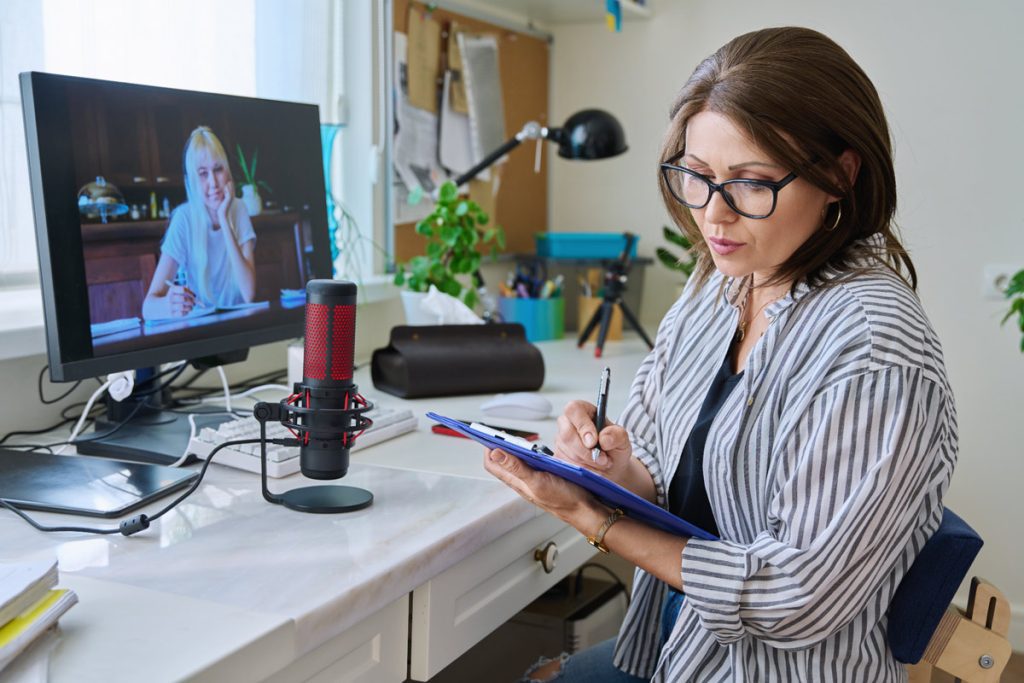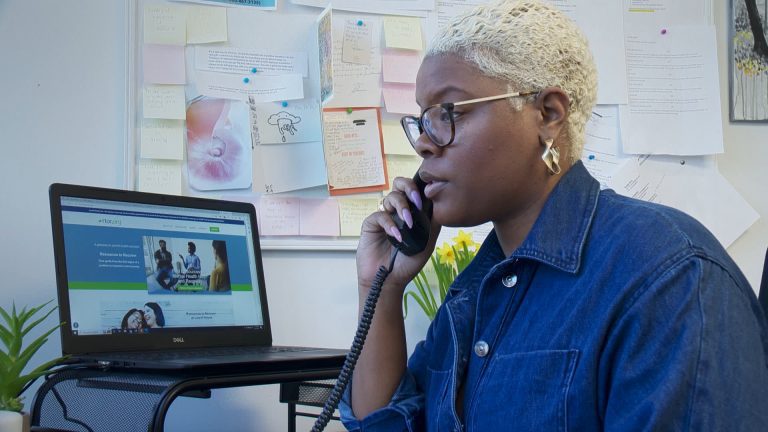Telehealth only became widely used as a result of the COVID-19 pandemic. At a time when we were mandated to socially distance and quarantine, in-person therapy appointments were out of the question. So, we turned to Zoom and other video conferencing technology to attend our sessions virtually.
Fast forward to the present, and virtual consults with therapists are still readily available. Due to the many benefits of telehealth therapy, this method of treatment appears to be here to stay, even post-pandemic.
But what are some of the reasons we should still consider using telehealth to access mental health care, and why has it remained a preference for many people? Stay with us as we discuss this in more detail and share our top tips for telehealth therapists and their clients.
The Benefits: Teletherapy Tactics to Support Self-Care
Telehealth Therapy is Considerably More Convenient Than Attending Sessions in Person
If you’re pressed for time, you know the inconvenience of having to rush from one appointment to another. Getting to your therapy appointment on time can be stressful, especially when dealing with post-work rush-hour traffic. Even worse, if you can’t get an after-hours appointment, you must make time during working hours.
The beauty of telehealth is that if you work from home, you can easily fit your session into your lunch hour. No need to battle bumper-to-bumper traffic to get yourself to the clinic. Attending therapy sessions from the comfort of your home is considerably more convenient and saves you wasted time on travel.
Teletherapy is More Geographically Accessible for Many People
Not only is teletherapy more convenient, but some people may not have the means of transportation, physical mobility, or local access to attend mental health appointments. If you don’t drive, own a car, or live near public transport, your options for in-person attendance could be limited. Telehealth therapy sessions remove this barrier and ensure that even the most geographically isolated patients can receive needed treatment.
Telehealth Can Be More Financially Affordable in Some Cases
Due to reduced travel costs, telehealth can also make receiving therapy more affordable. Also, thanks to recent public mental health initiatives, some people may be eligible to receive government rebates for telehealth appointments.
For these reasons, telehealth remains one of the most popular ways to receive therapy today. Despite this, it does have some drawbacks. But with the right approach, these can all be overcome. Stay with us as we explain how.
The Barriers: Tips to Overcome Common Telehealth Challenges
The Challenges of Building On-Screen Rapport
We’ve all been there. Trying to connect with people over Zoom is not the same as seeing them in person. From the notoriously unsuccessful concept of COVID-19 virtual speed dating to the dramatic flop of virtual happy hours, building genuine rapport through a screen can be difficult to achieve.
Despite this drawback, telehealth therapists can overcome these barriers using their powers of perception and empathy. Of course, it takes more effort to visually assess clients over Zoom, and the therapist needs to be particularly astute at picking up on non-verbal cues through the screen. It is still possible, however, and can be achieved by actively observing and assessing clients’ on-screen behavior.
Navigating the Possibility of Technical Difficulties
With teletherapy, there is always the possibility of technical difficulties to make connecting harder. Sometimes, the patient’s microphone may not work, or the camera isn’t functioning correctly. Telehealth therapists must be well-versed in technology troubleshooting and be able to guide their clients through common digital problems to avert potential interruptions of service.
The Threat of Cyberattacks and their Potential Impact on Patient Privacy
Cybercrime is a genuine threat, and with sensitive private matters being conveyed over the internet, there is the fear that this information could fall into the wrong hands. Telehealth therapists must reassure their patients that they have installed reliable anti-virus protection on their digital devices and encourage patients to do the same.
The best part? Once these barriers are addressed, patients can enjoy the benefits of telehealth technology. Given the convenience, accessibility, and cost-saving bonuses, they are more likely to continue attending teletherapy sessions for some time to come.
About the Author: Charlie is a student whose experiences in life make her strong. She can lend you expert tips on diverse topics ranging from relationships to fashion, making money, health, education, and business.
Resources to Recover and Our Sponsor Laurel House Celebrate Black History Month
February is Black History Month, a time for celebrating the outstanding achievements of Blacks and African Americans and their central role in US history. It is also a time to recognize the struggles Black people have faced throughout our nation's history and give tribute to the strength and resilience of generations of Black Americans who have risen above adversity.
Black History Month originated from an idea by Harvard-educated historian Carter G. Woodson, who wrote the Journal of Negro History in 1916 to herald the achievements of overlooked African Americans in US history and culture. In 1926 he led an effort by the Association for the Study of Afro-American Life and History (ASALH) to officially declare the second week of February as "Negro History Week." These dates align with the birthdays of two crucial figures in Black American history: Abraham Lincoln (February 12, 1809), who signed the Emancipation Proclamation officially ending slavery in the United States, and the Black American abolitionist and author Frederick Douglass (February 14, 1818), who escaped from slavery to become one of the most influential civil and human rights advocates of the 19th century. In 1976, President Gerald Ford gave official governmental recognition to the observance by declaring February "Black History Month."
Black History Month is an opportunity for all people to reflect on the past, assess the present, and plan for the future ahead. The Black History Month theme of 2024, African Americans and the Arts, explores "the key influence Black people have had in the fields of visual and performing arts, literature, fashion, folklore, language, film, music, architecture, culinary and other forms of cultural expression."
Without the contributions of Blacks and African Americans to more than 500 years of US history, culture, entertainment, science, the arts, athletics, industry, politics, and the Armed Forces, we would not be the country we are today.
The opinions and views expressed in any guest blog post do not necessarily reflect those of www.rtor.org or its sponsor, Laurel House, Inc. The author and www.rtor.org have no affiliations with any products or services mentioned in the article or linked to therein. Guest Authors may have affiliations to products mentioned or linked to in their author bios.
Recommended for You
- Why a Mental Health Retreat Can Transform Your Recovery Journey - December 11, 2025
- Laughter as Therapy: How Humor Supports Emotional Recovery - December 8, 2025
- When Teenage Stomach Pain Signals Anxiety: A Pediatric GI Doctor Explains - December 4, 2025







